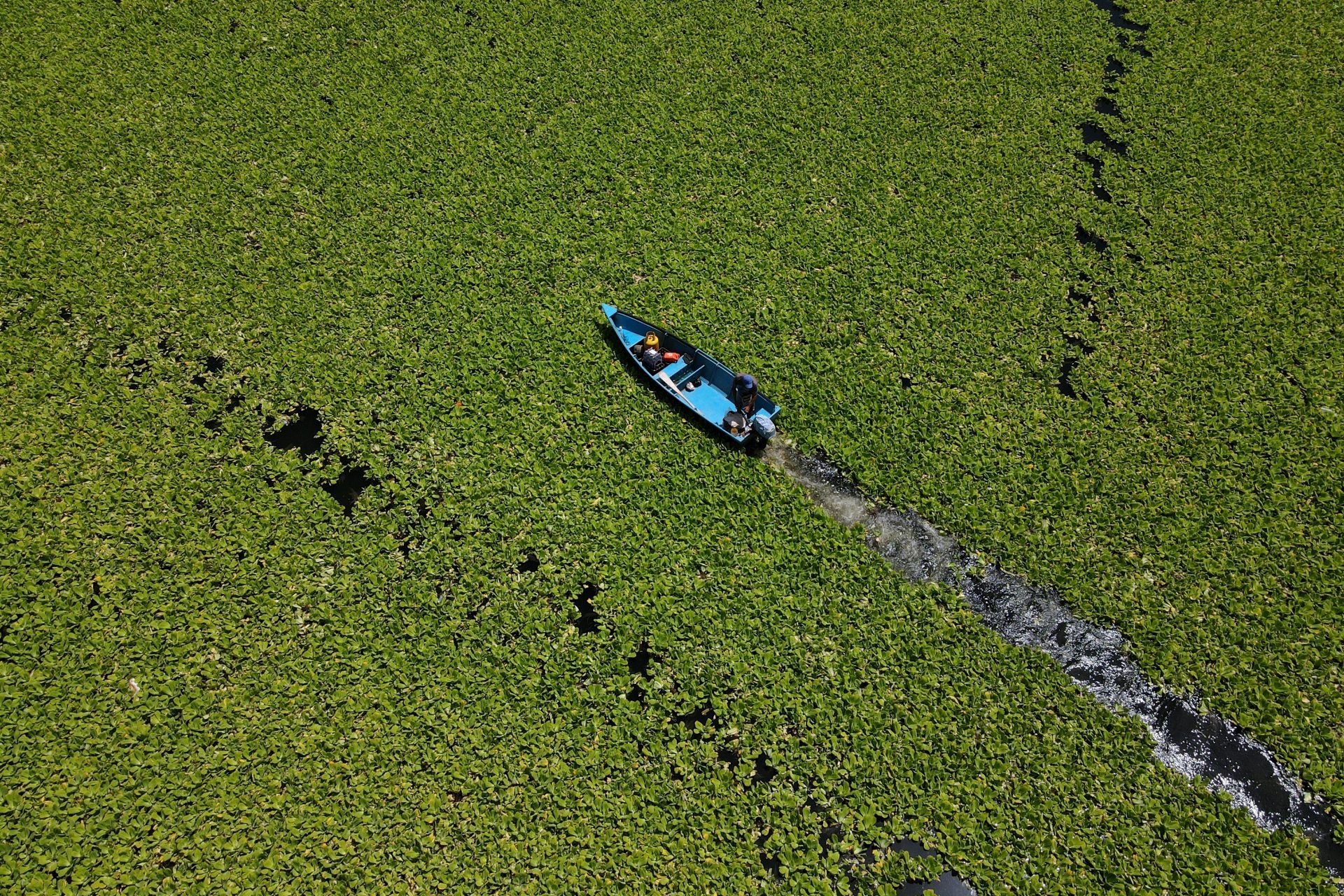Five invasive aquatic species from South America are proliferating in the world's rivers and lakes.

Five aquatic plants native to South America are colonizing rivers and lagoons around the world and adapting to climates different from their native habitats. This expansion may continue as the study's researchers have found environmentally suitable areas that have not yet been occupied.
These are the results of a study carried out by researchers from the University of Sassari (Italy), the National Center for the Future of Biodiversity (NBFC, focused on the Mediterranean), the Espiritu Santo University (UEES, Guayaquil, Ecuador), the National Institute of Biodiversity (INABIO, Ecuador) and the Justus Liebig University of Giessen (Germany), according to a statement.
Five invasive aquatic plantsThese are the aquatic plants Egeria densa, Myriophyllum aquaticum, Pistia stratiotes, Pontederia crassipes, and Salvinia molesta, which in their place of origin "rarely form large masses, while on other continents they grow uncontrollably, blocking waterways, reducing biodiversity, and affecting human activities such as fishing and tourism."
An example is the water hyacinth (Pontedeira crassipes), which has already invaded rivers and lagoons in Europe and Africa, while the giant fern (Salvinia molesta) is spreading rapidly in Asia.
The study was conducted by Vanessa Lozano, Ileana Herrera, André Grose-Stoltenberg, and Flavio Marzialetti, who analyzed thousands of global records and climate models specific to freshwater ecosystems.
The research team compiled thousands of global records of these five plants across their native (South America) and invaded (Europe, Africa, Asia, North America, and Australia) ranges, and used that data to build climate models specifically designed for freshwater ecosystems—“something uncommon in this type of study.”
The results show that these species readily invade colder, drier environments, especially in Africa and Europe, while in North America they maintain a surprising degree of stability relative to their original niches (the place a species occupies in the environment).
They can continue their proliferationAccording to the study, the most worrying aspect is that environmentally suitable areas have been found that have not yet been occupied, meaning that expansion could continue.
"Although most niche shifts occur within the climatic limits of South America, the flexibility of these plants demonstrates a global risk," they note.
Invasive exotic plants are one of the main threats to biodiversity because they form floating mats in aquatic ecosystems that block light from entering the water, reduce available oxygen, and harm fish and other organisms. They also complicate navigation, fishing, and tourism, and disrupt nutrient cycles and ecosystem function.
Among the study's recommendations, the researchers note that "more attention should be paid to freshwater environments with high climatic suitability for these non-native invasive aquatic species, as well as to small niche shifts between native and invasive ranges."
Furthermore, they emphasize the importance of monitoring propagule exports from both the native and introduced distribution areas to prevent further global expansion. EFEverde
lul/icn
efeverde





